Formula 1 is an all-day three-day event. Consequently, a seat in a grandstand will become more like a prison after a while, unlike if you were attending a 2-hour game. In Las Vegas (see Nine minutes of Formula 1 glory at the Las Vegas Grand Prix) our ticket gave us access only to a small area where we could get food, use the waterless porta-potties, or walk to the grandstand. In Miami, a standard ticket gives the holder access to an entire campus (albeit only one grandstand) and thus there is a lot more to see and do. having the massive football stadium at the center of the campus is valuable because it is possible to ride an escalator up to the third floor of the stadium, walk around, see the track from above, eat from a non-temporary kitchen, use a non-temporary bathroom, etc. (Even the temporary rest room facilities in Miami, unlike in Vegas, were water-based and had water for handwashing.)
Despite my fears of being roasted and steamed to death, the weather forecast for the weekend was highs of 83 degrees and partly cloudy.
Given the inevitability of traffic and high-cost parking, the obvious way to get to the event is Lyft/Uber to the front door. However, it turns out that these services dump people a 20-minute walk from the stadium on big event days and may not be easy to find afterwards. I paid $84 for a resale Saturday-only parking ticket on the north side of the stadium, of which $25 was in SeatGeek fees:
I told my companion “I guarantee that, after parking, we will walk by businesses and individuals selling parking for less than half of what we paid.” Sure enough, the modest neighborhood to the north of the stadium had families selling driveway parking for $35-50 (see below). Lot 34 still ended up being a good choice because they open an exit at the NW corner. Although we left at the precise peak time, right after the final qualifying round, we didn’t wait to get out of the parking lot and suffered through no more than about 10 minutes of additional traffic compared to a best-case scenario.
It was a 20-minute walk to the entrance gate from Lot 34. If one were headed back toward Miami, probably the smart thing to do would be independent parking on the south side of the stadium (lots of businesses there with big lots) and, if departing at a peak time, stop at a restaurant for dinner before heading out on the road.
Security check (no bags or food allowed, basically, and we heard some vague mumbling about camera lenses no longer than 6 inches) and ticket check was quick. Bring in a sealed bottle of water and then there are free refill stations all over the venue. Also bring earplugs for the Porsche races and for the F1 qualifying (you can just put your fingers in your ears as the pack of cars goes by in an F1 race).
I was instructed to pick some drivers to root for. After hearing their biographies, I decided that my loyalties are to Logan Sargeant, a 23-year-old Floridian who drives for Williams, Yuki Tsunoda, a 23-year-old from Japan who drives for Red Bull’s second team (“RB”) because I love Japan, and Max Verstappen, the 26-year-old champion who reminds me of my Dutch friend Max (he’s against big government and low-skill migrants).
The “West Campus” features about 15 restaurants and a popular F1 merchandise store. People actually waited in line for the chance to buy $75-100 T-shirts:
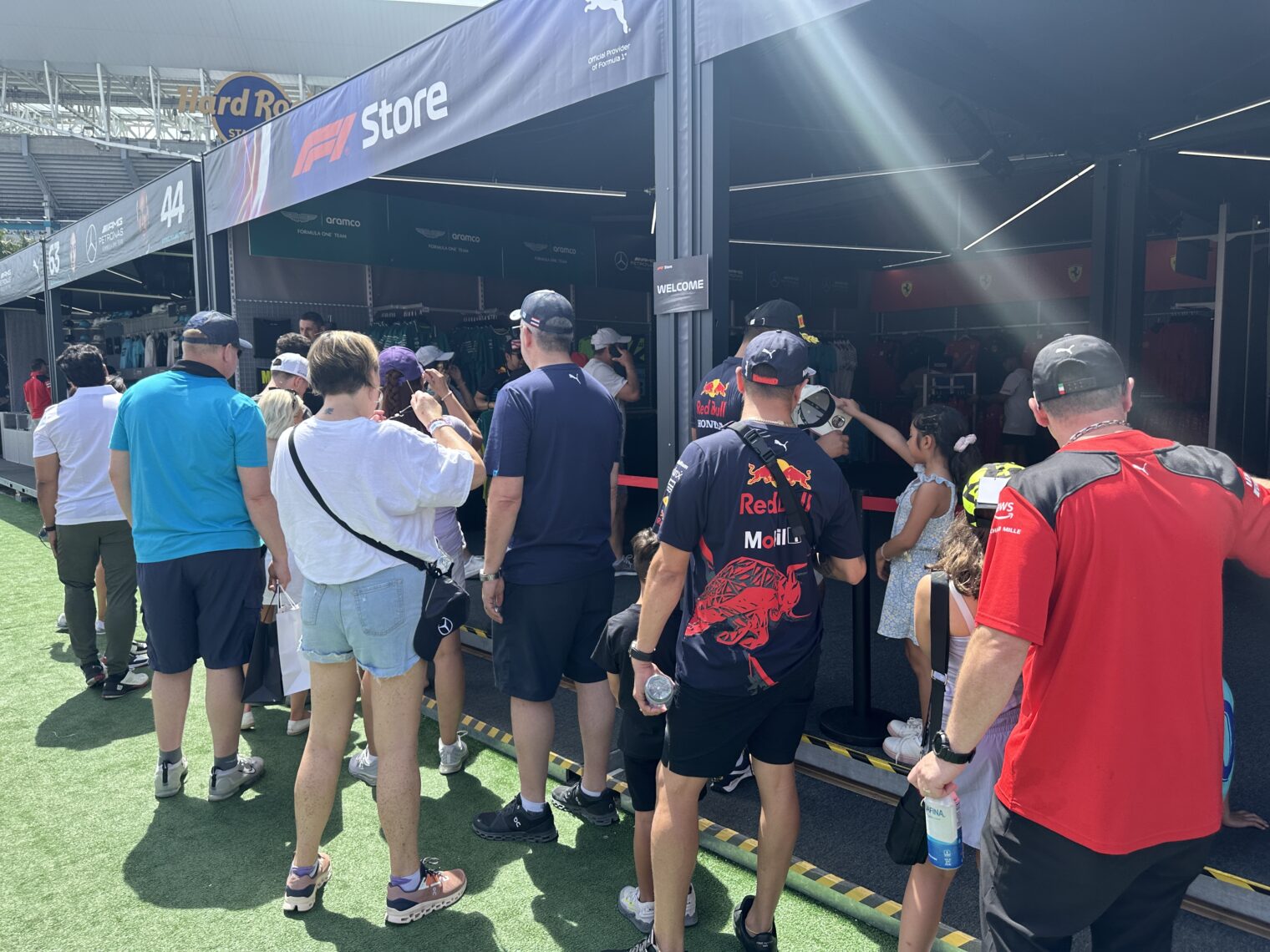
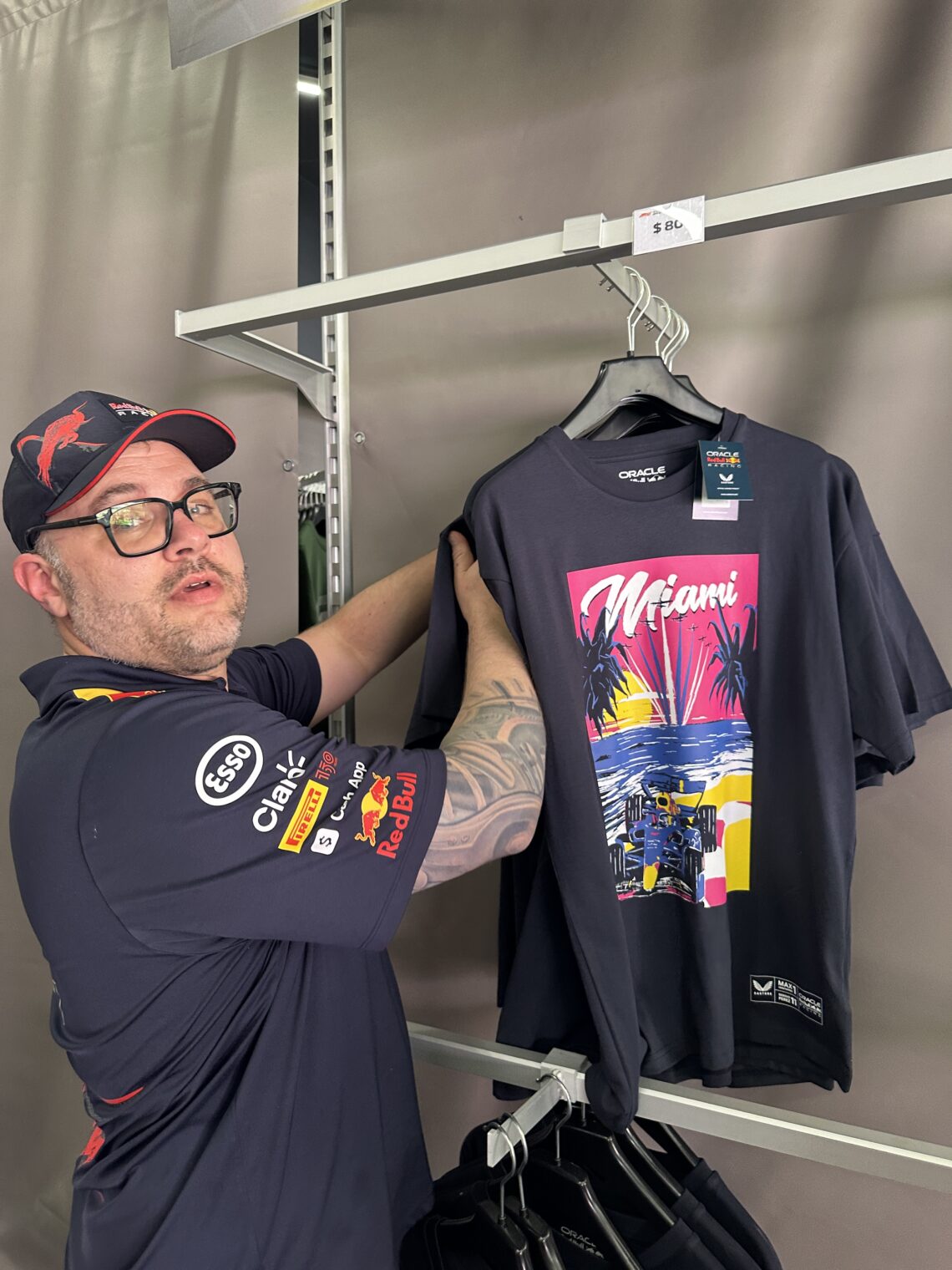
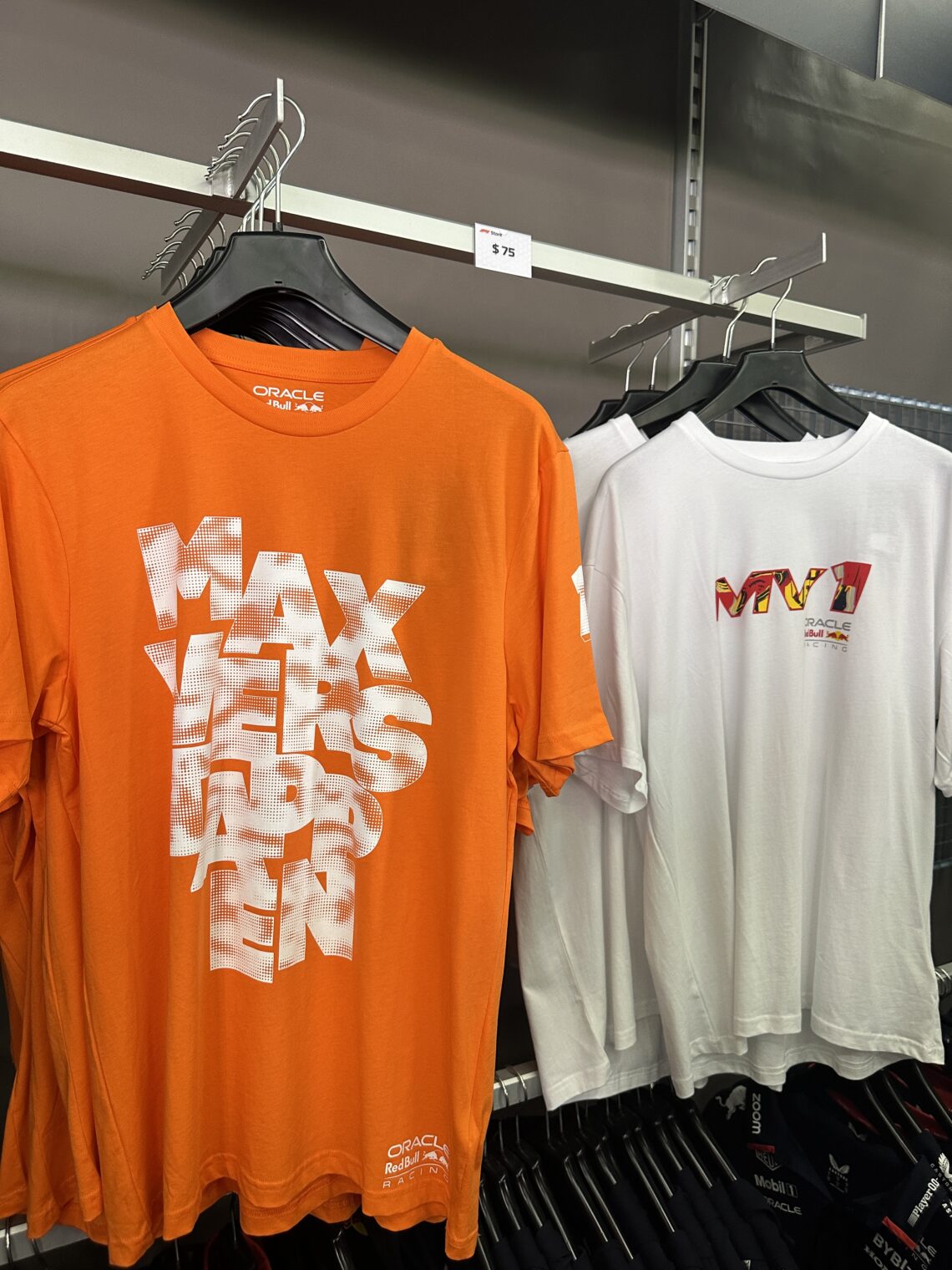
The shopper in the middle photo told me that everything is cheaper online and, in fact, the orange T-shirt above for which people were paying $75 at the event was quoted at $42, not on sale, on the official F1 store web site. The $80 black shirt, however, wasn’t available online when I checked, so maybe that’s why people are desperate to shop at the event. The truly great hat shown below wasn’t for sale:
There was quite a bit of shaded seating for eating and drinking. My Twitter post, which nobody thought was funny:
Here’s a view of the grandstand taken from the 3rd floor of the stadium:
Our Turn 18 grandstand seats ($180 resale plus a forest of fees) weren’t all that interesting. We never saw a change in position, an accident, or anything else other than people decelerate (far away) and then come slowly out of tight turn (close). Row M is the best in this grandstand due to being shaded and yet just in front of the columns that hold up the shade structure. Later in the day, at least six rows below M will also be shaded on the west side of the grandstand. Here are photos at noon showing that L and M are shaded followed by two photos at 4 pm showing that the west part of the grandstand has a much more favorable angle than the east part (by 2 pm, even row I was shaded on the west side):
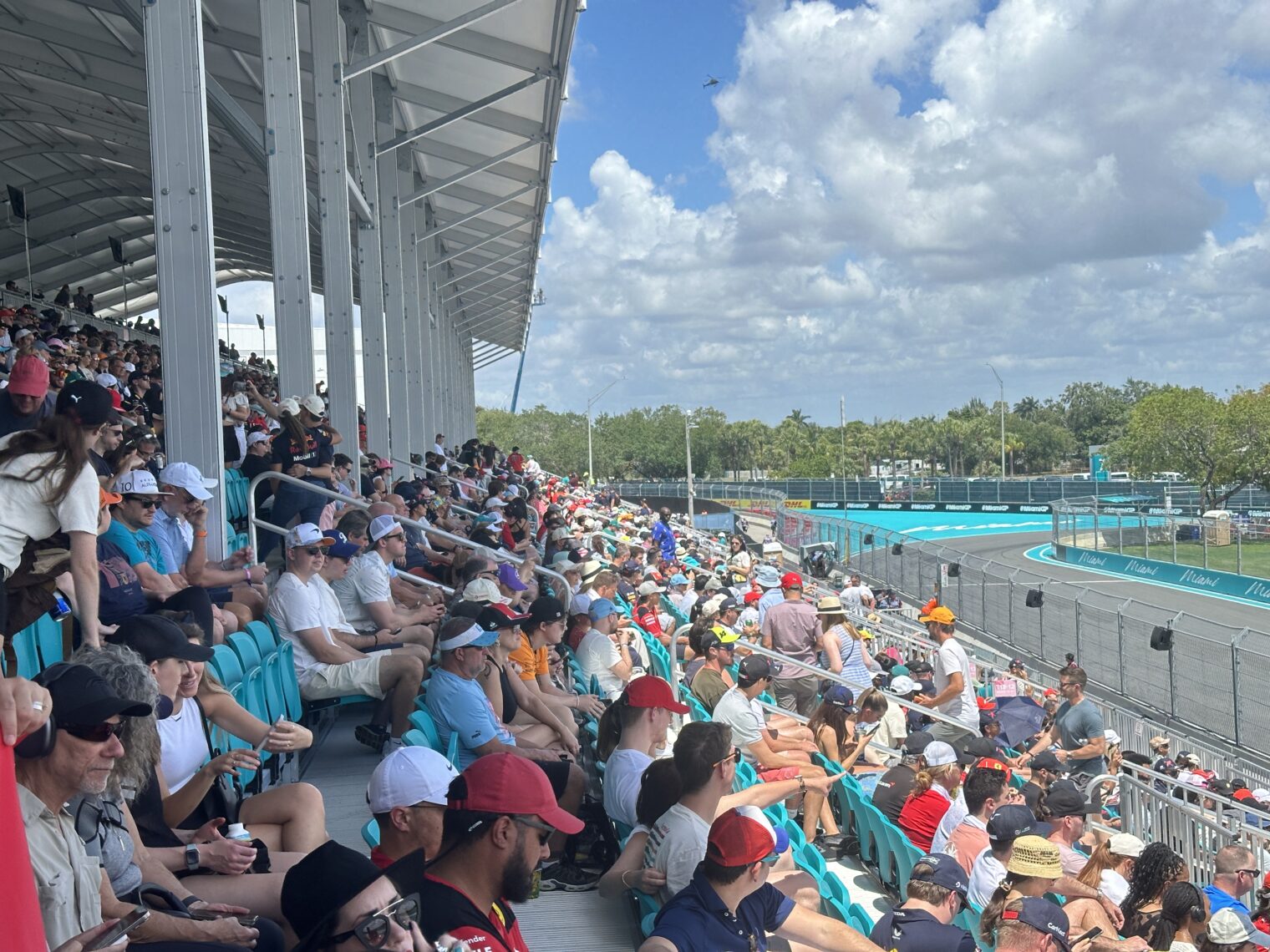
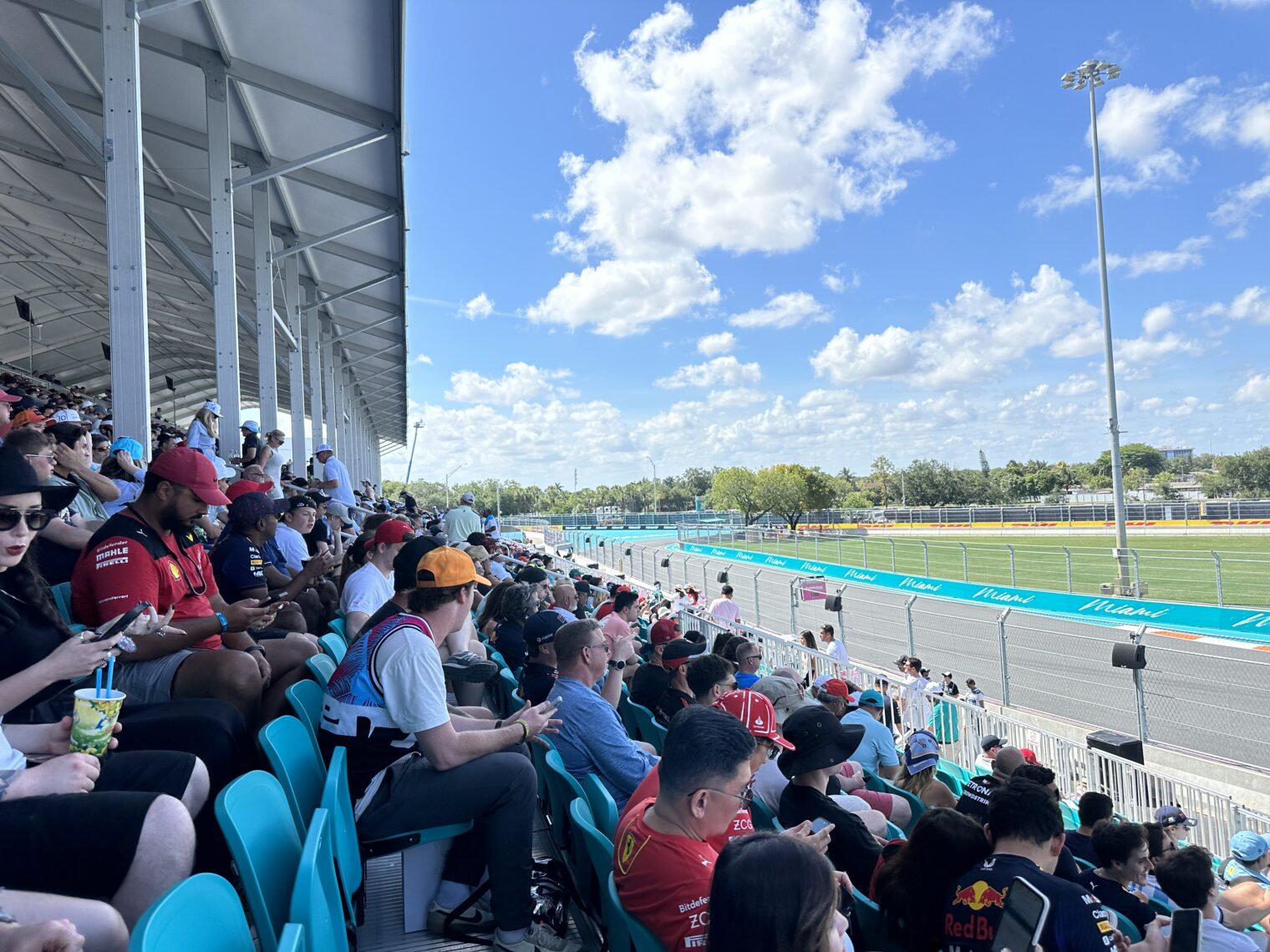
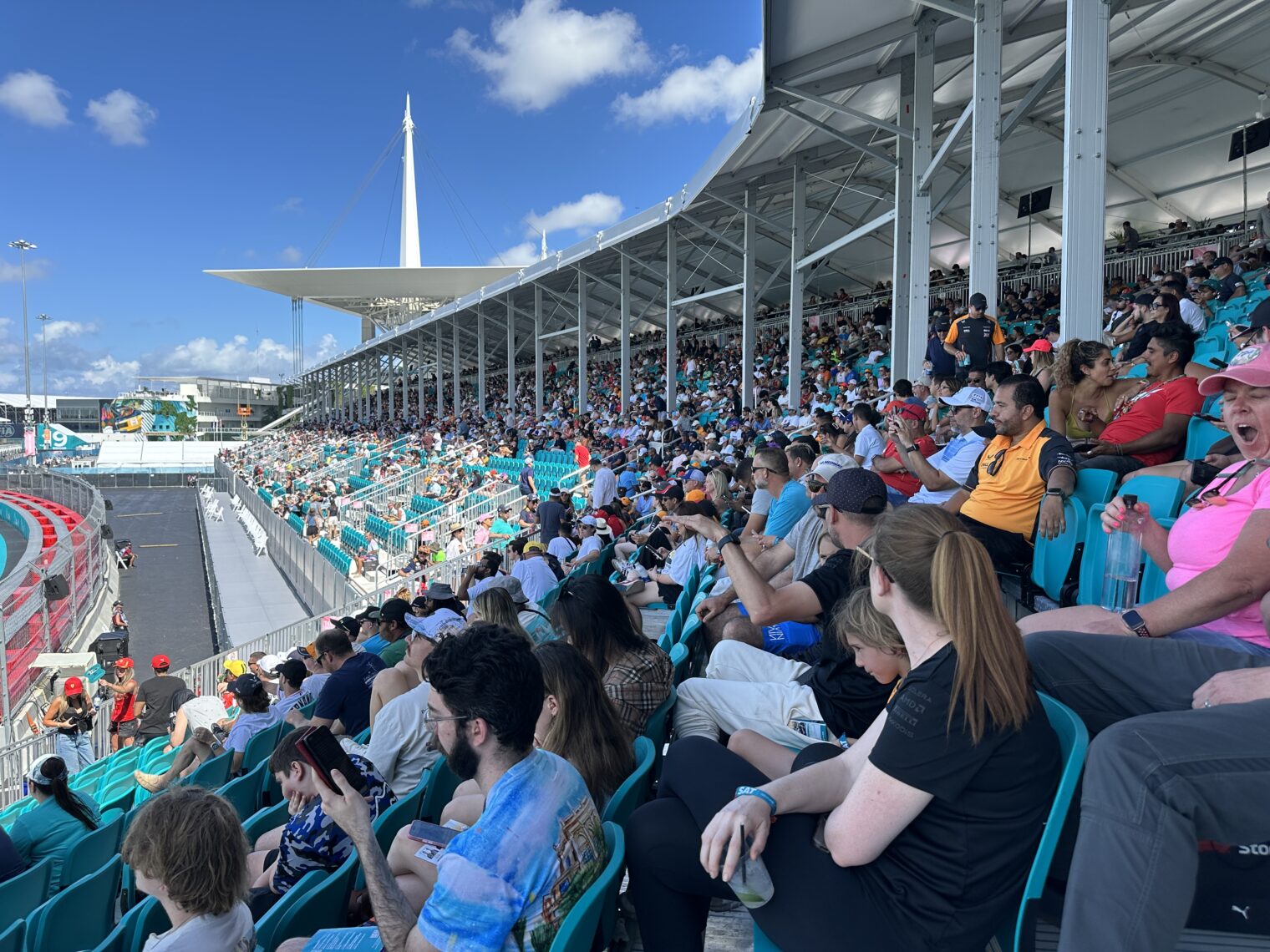
The aviation story for the event is a temporary flight restriction from 0-1000′, which is perhaps just as well considering the proximity of 1050′-high towers right next to the stadium.
An AStar (“Airbus H130”) flew tight maneuvers, often substantially sideways, over the more important races. I’m surprised that this made more sense than using drones to get dramatic aerial footage of the race. A drone operator on top of the stadium would have been able to see the aircraft at all times and a camera operator could have manipulated the camera angle. Maybe the camera in the ball underneath the AStar can be heavier, but is a huge sensor and lens necessary for taking pictures under the bright Miami skies? A Robinson R44 also flew over the course from time to time and the Hard Rock’s Sikorsky S-76 ferried VIPs in and out. I’m sure the folks in the AStar got some better images that we did from our seats! iPhone at “3X”:
I’m not sure why Ferrari wants to participate in Formula 1. Isn’t the main take-away “A beverage company makes faster cars than we do and, also, quite a few cans of energy drinks”? Also, the Ferrari team is now sponsored by HP, which leads to a color clash and confusion in my brain. Why do tech companies get so much value out of F1 sponsorship? Shouldn’t it be consumer products companies that could get the most return on investment? How many people at a Formula 1 event are in the market for something from Oracle, Cisco, or HP? Who decides to use Oracle instead of SAP or SQL Server because Oracle sponsors the Red Bull team?
The restricted-by-gender-ID “F1 Academy” race was more exciting than the standard F1 open-to-all-genders events. The drivers all have the same car model and, therefore, nobody has a technical advantage. This makes it tougher to forecast the winner in advance. The lack of experience among the female-identifying drivers also makes the race more exciting. In the 13-lap race that we saw (drivers who fail to identify as “women” are forced to race for 19 laps (sprint) or 57 laps (full F1 race)), there were stalls during the start (failure to use manual transmission properly), sideways departures from the track in curves, and at least one crash against the side wall (nobody injured, fortunately). Despite the low level of experience among the drivers, big companies such as Cisco and Google pour in sponsorship money. The announcers give the drivers credit for every action, even if the action is a mistake, and note that “they’re learning so much.” Chloe Chambers, age 19 and born in China, was given credit for being adopted and also for living in a “multi-racial” family. Wikipedia says that in an all-gender Formula 4 contest she finished #26 (perhaps she was the top driver who identified as “female”?). Drivers who don’t identify as “female” at the Formula 4 level would be lucky to enjoy 100 spectators at an event, but the “F1 Academy” race was watched by tens of thousands, sandwiched as it was between all-gender F1 events.
The lines for food seem to get long from 1-3 pm as fan hunger overpowers resistance to paying $30 per person for lunch. Here’s the line for $23 personal-size pizza:
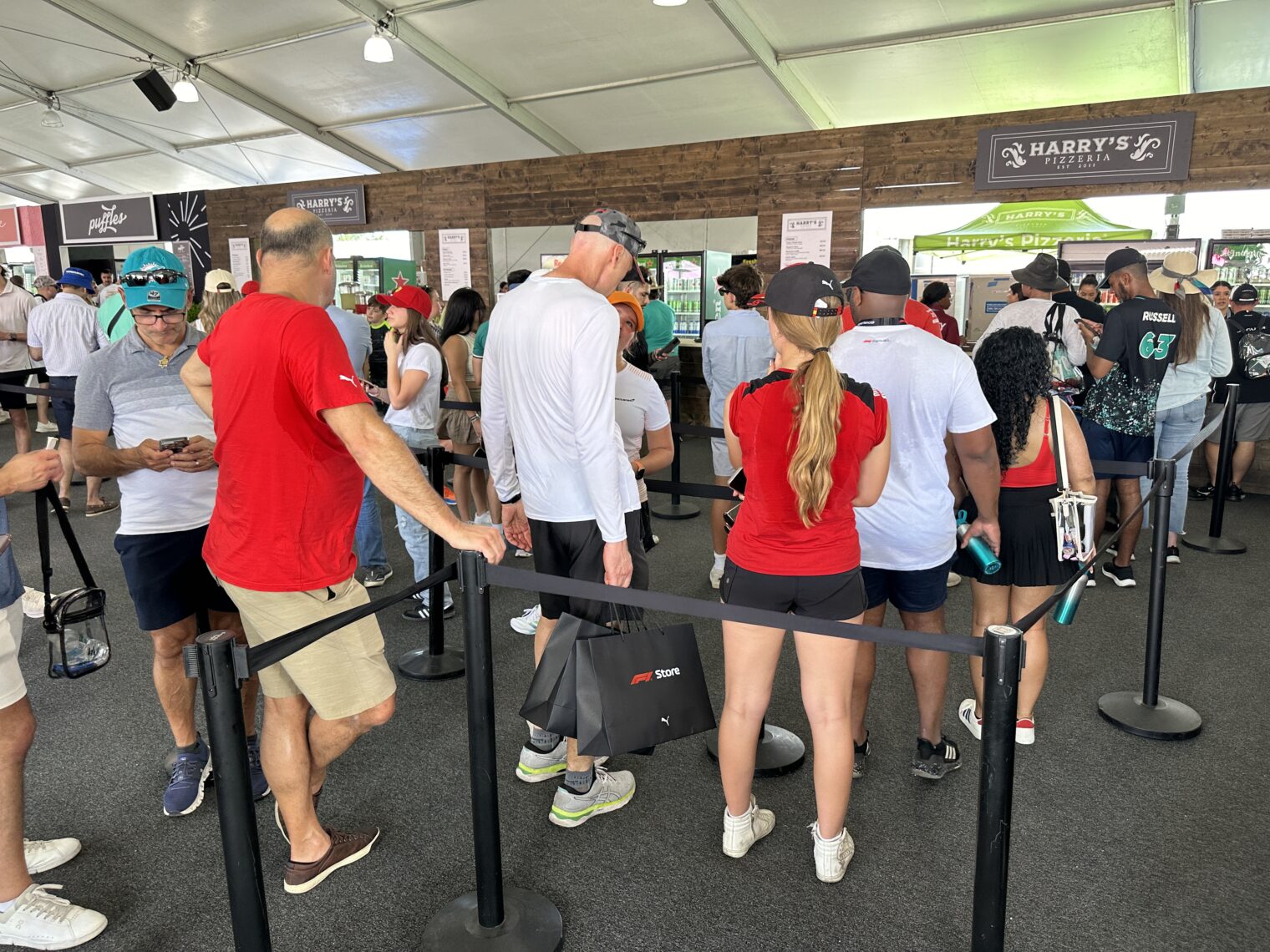
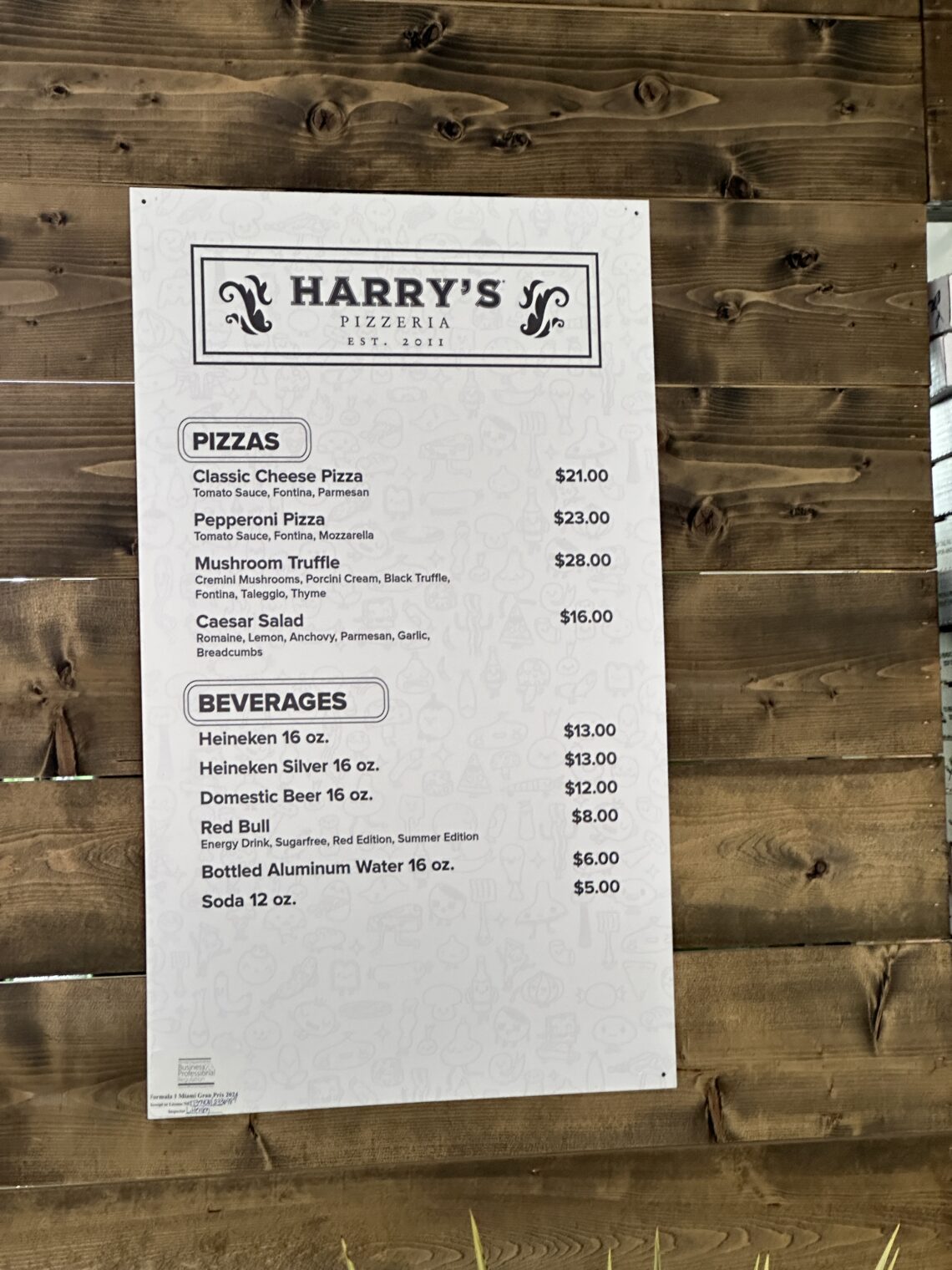
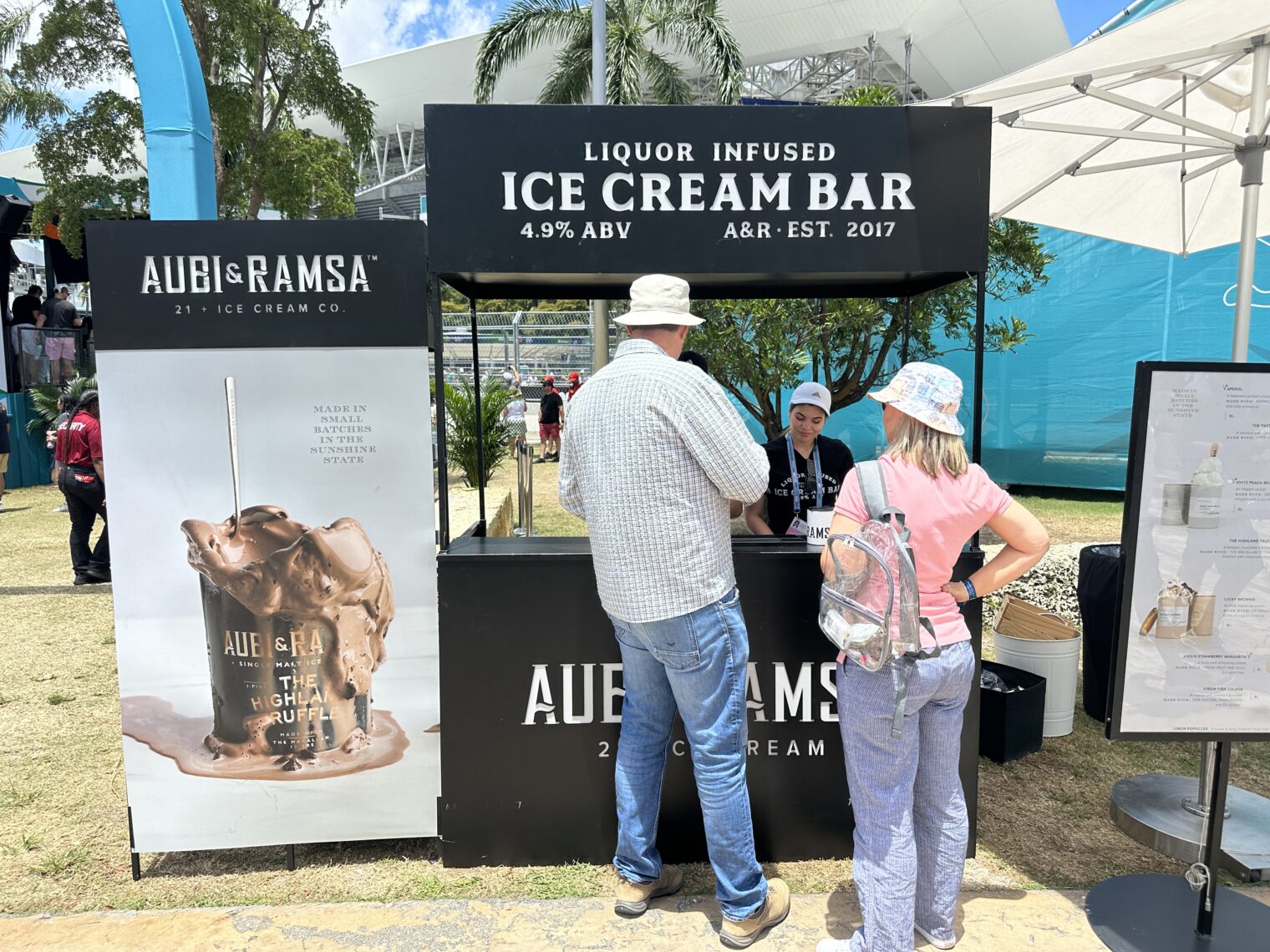
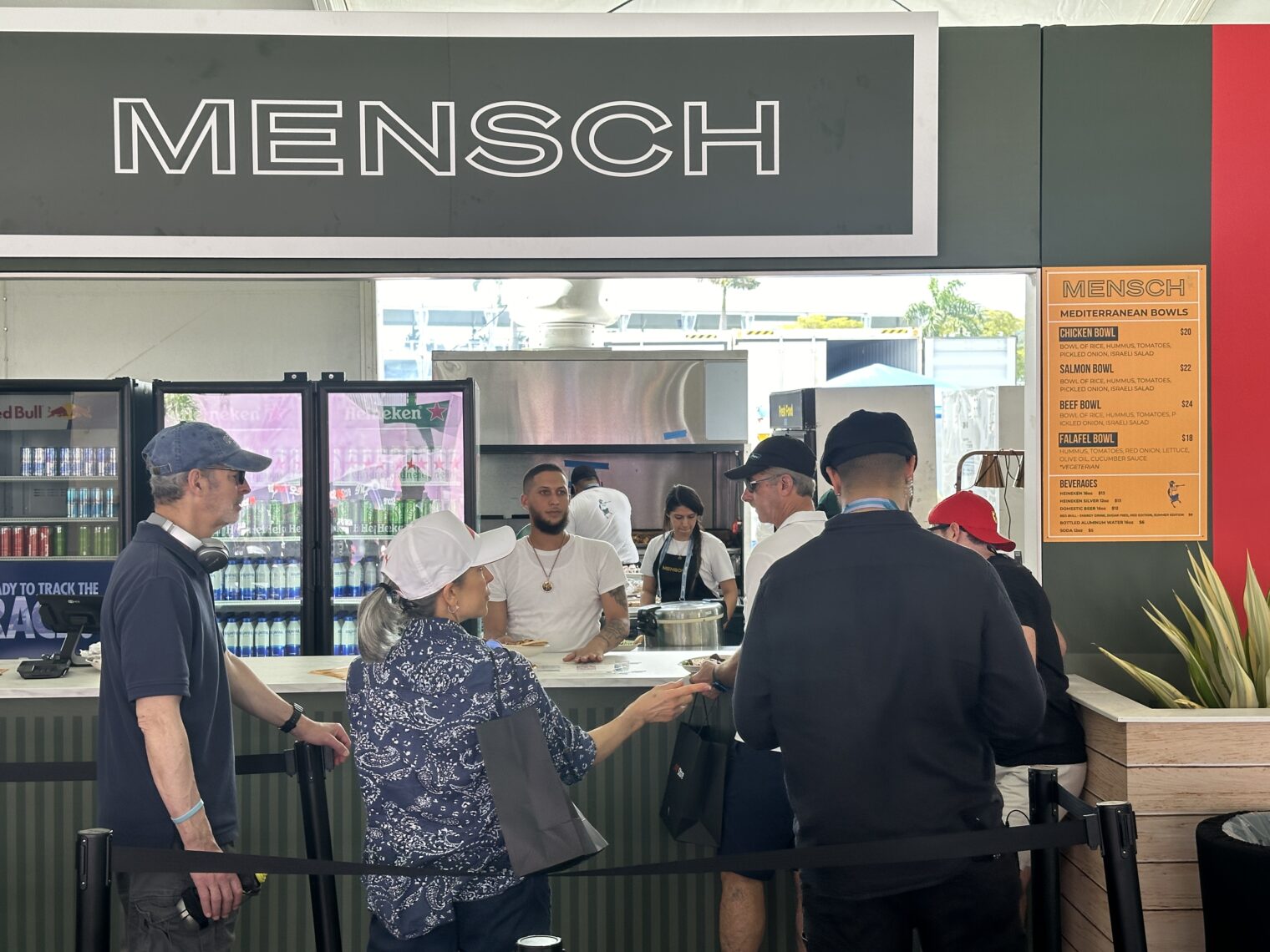
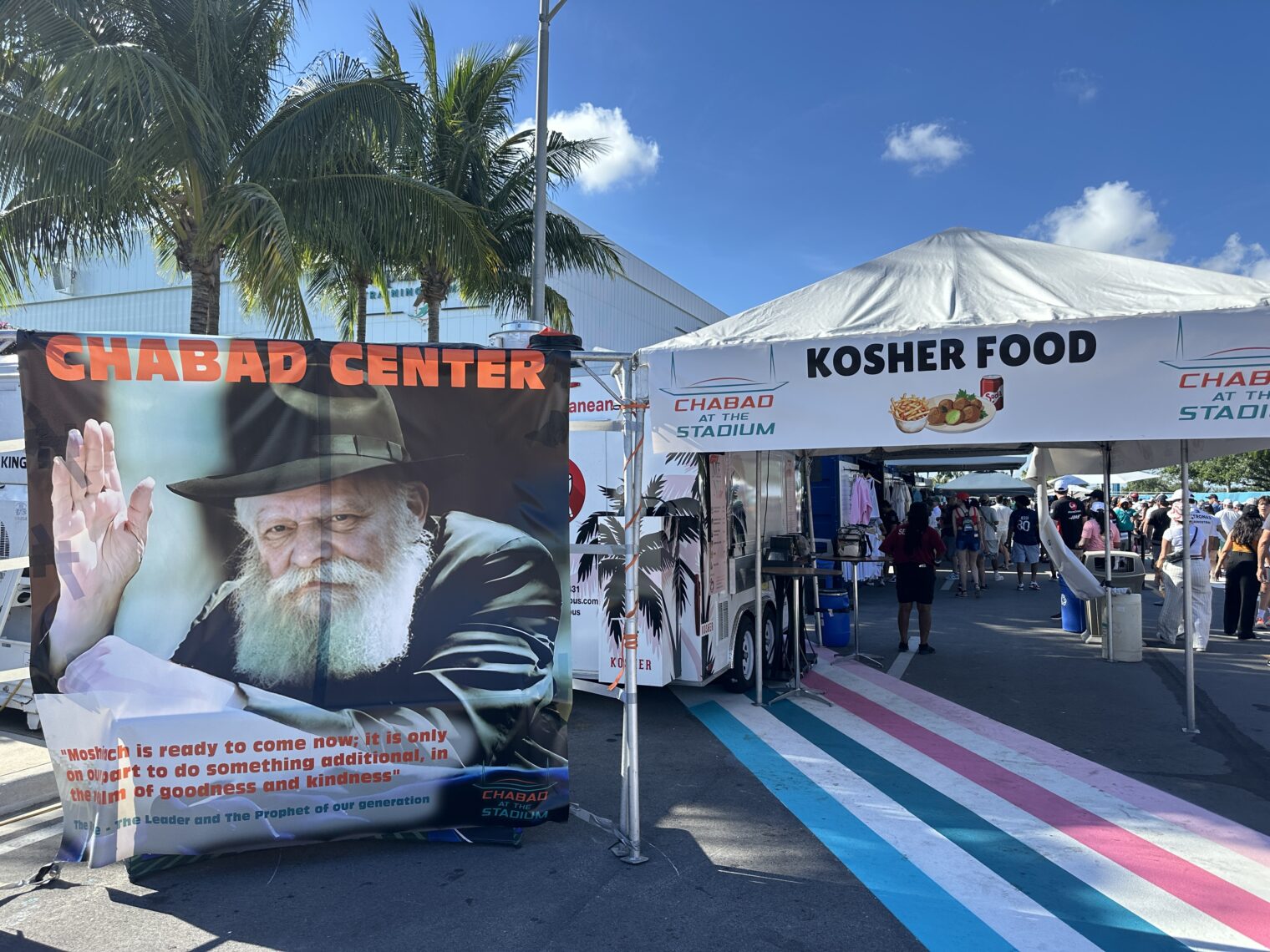
Frosted lemonade was $12, a burger $20, and tacos were $10 each. As noted above, the ability to walk around inside the stadium is valuable and offers fun views of racing and the fan zones:
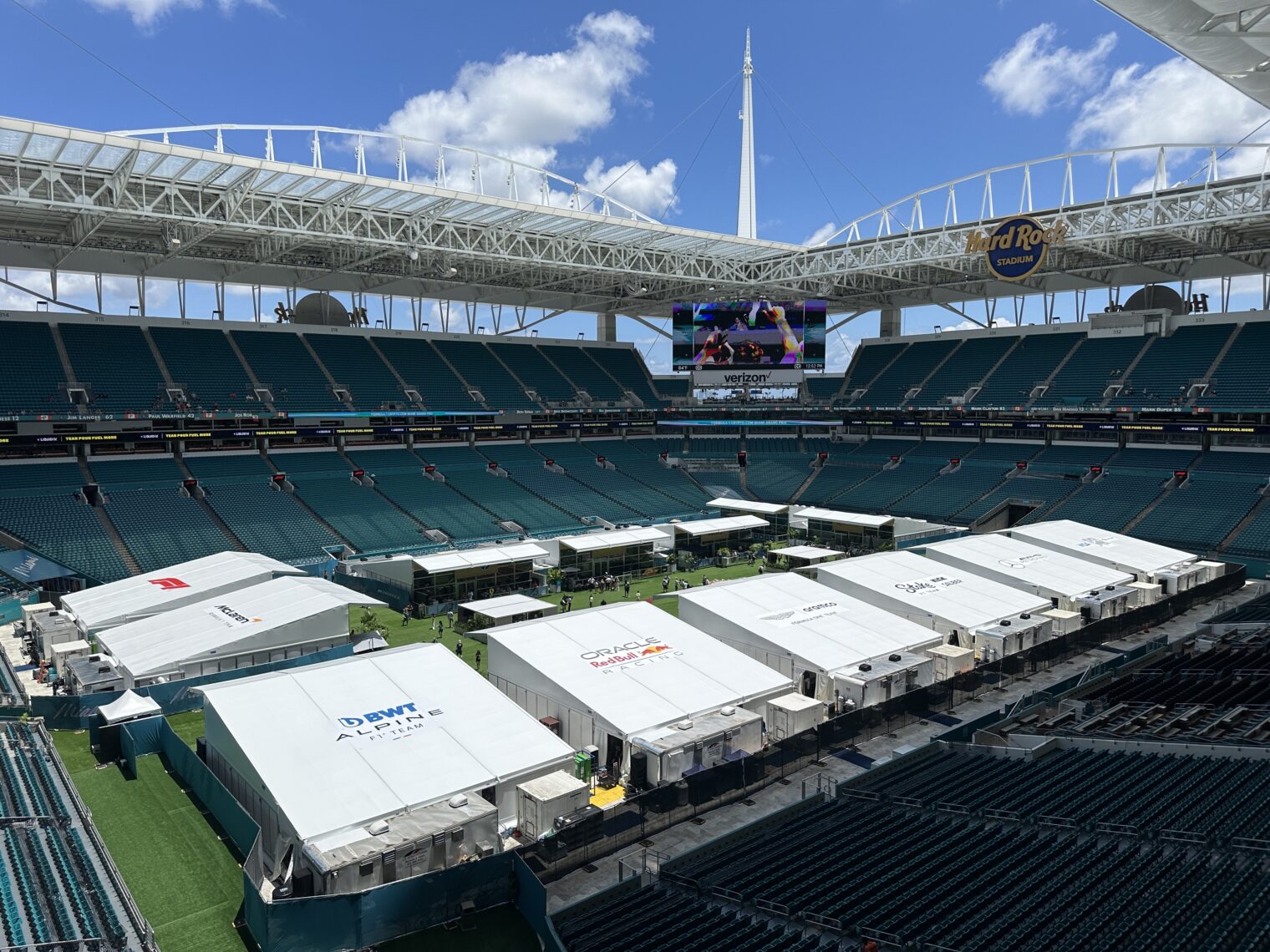
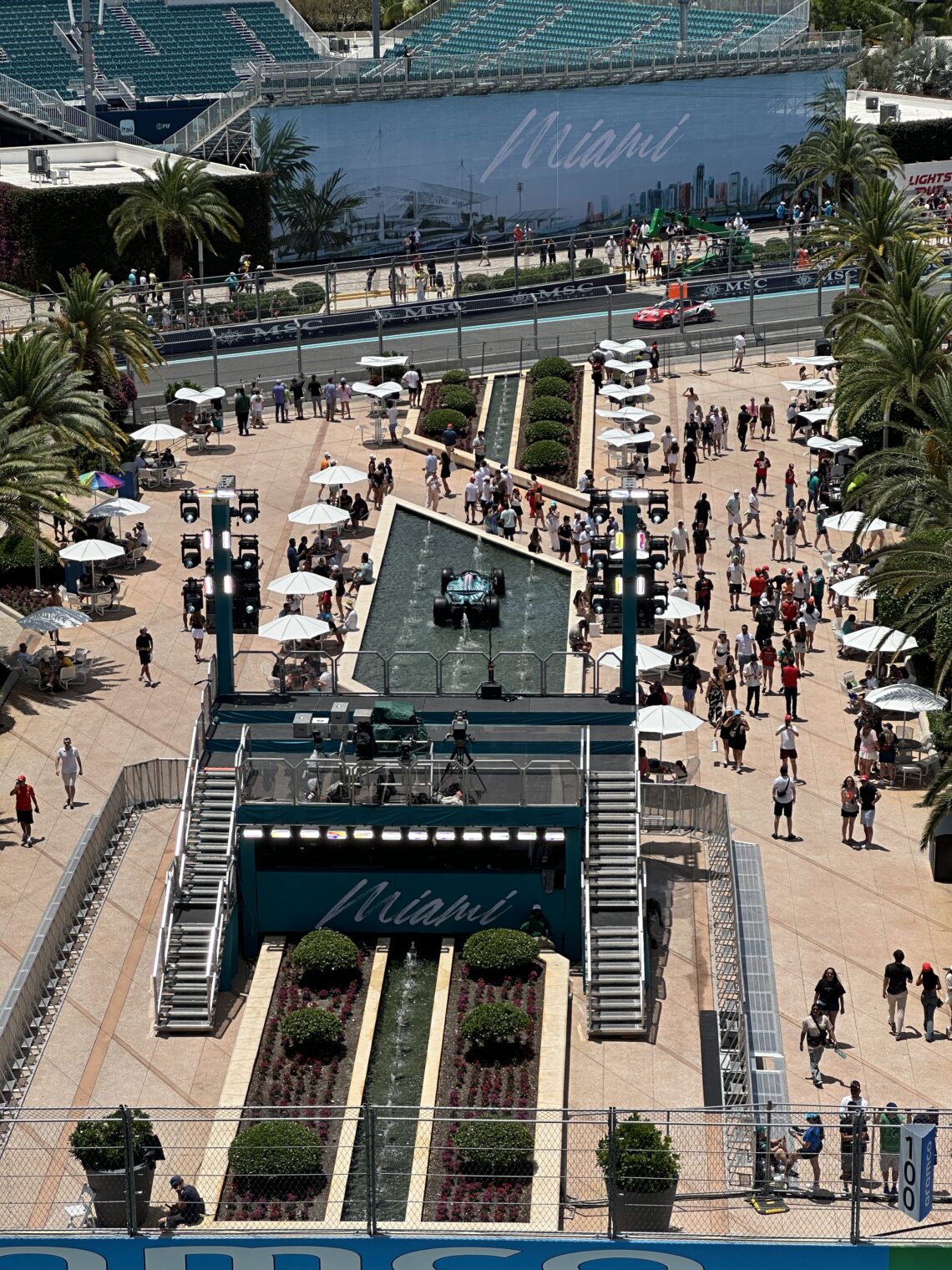
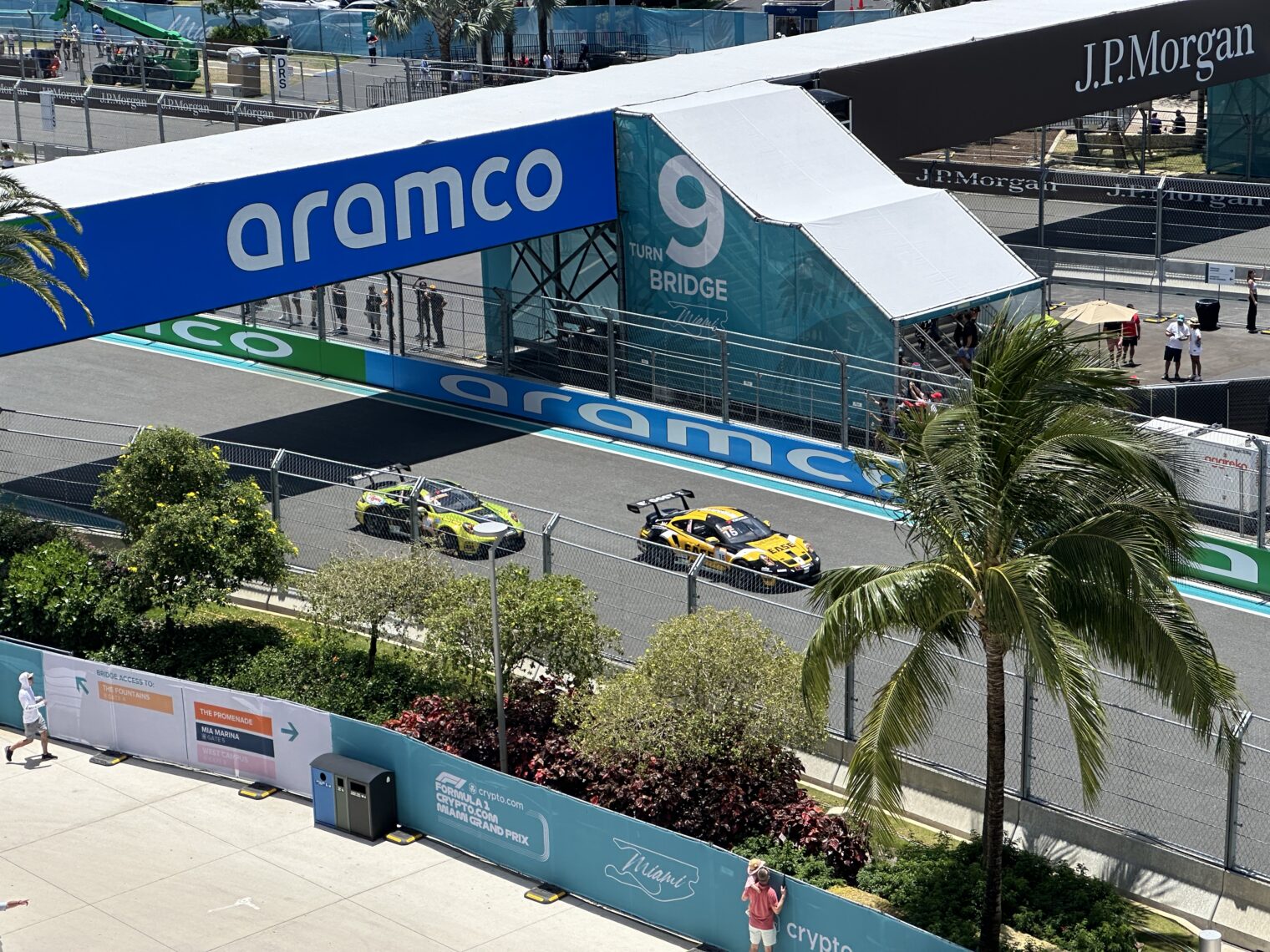
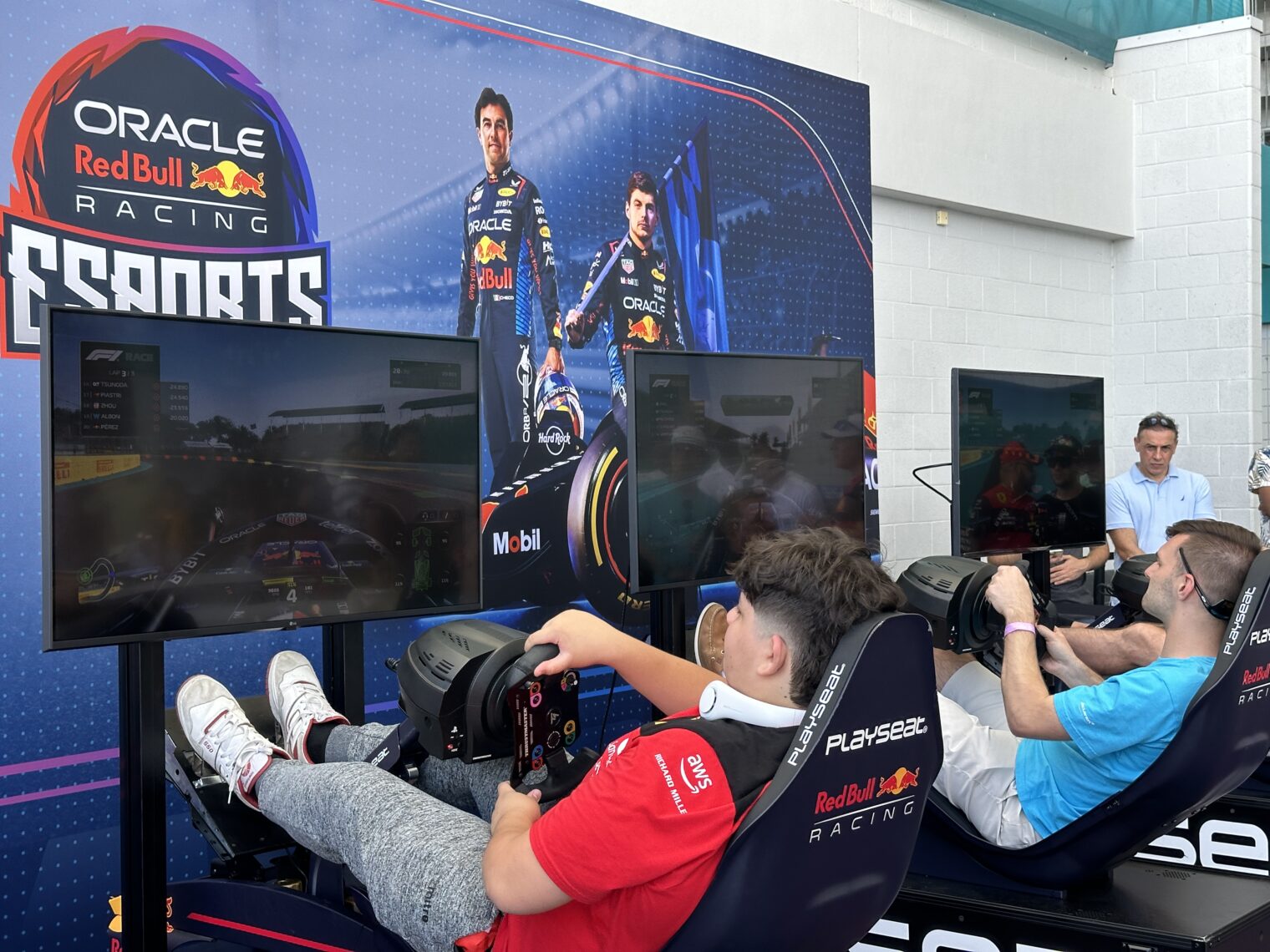
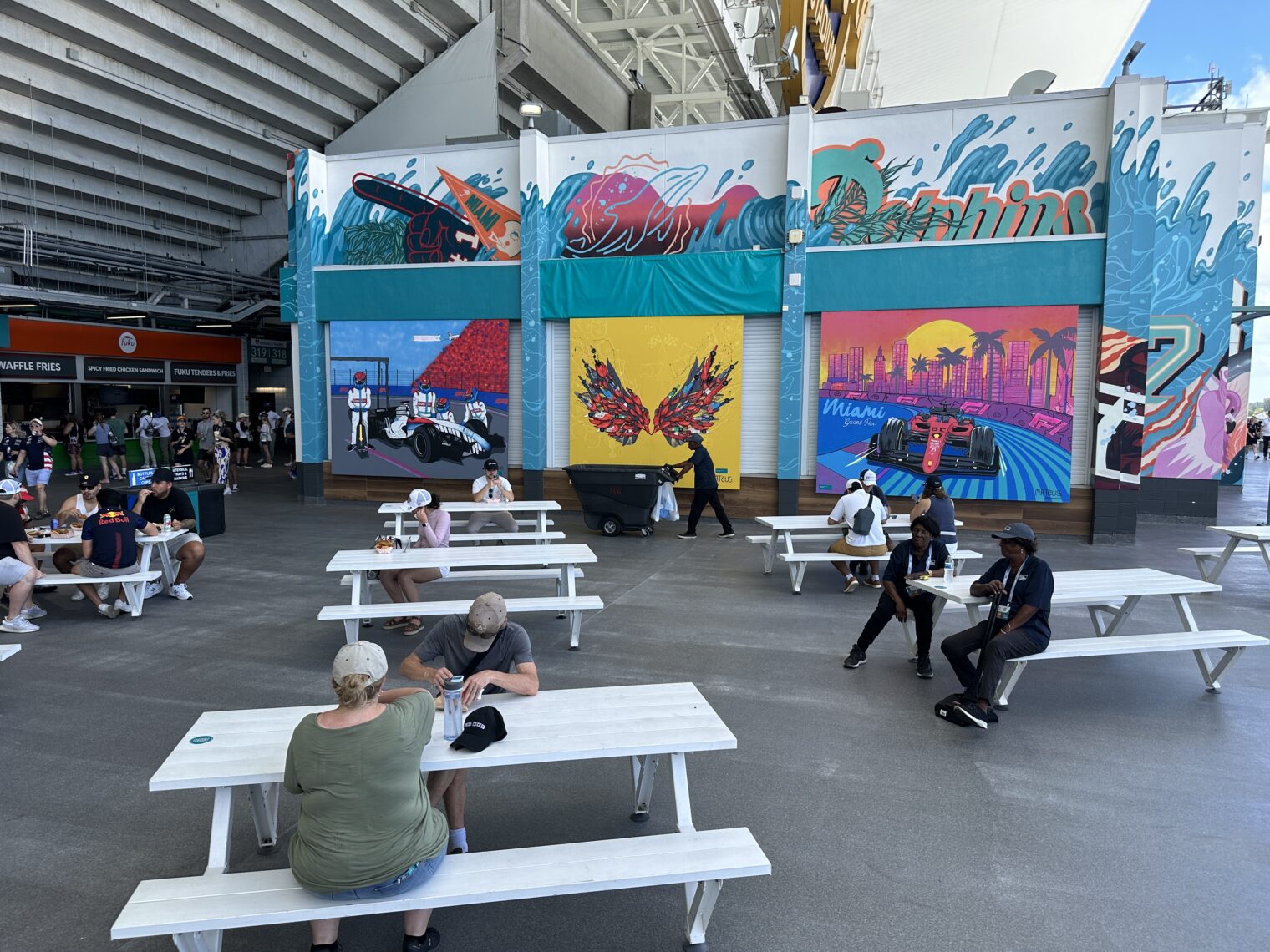
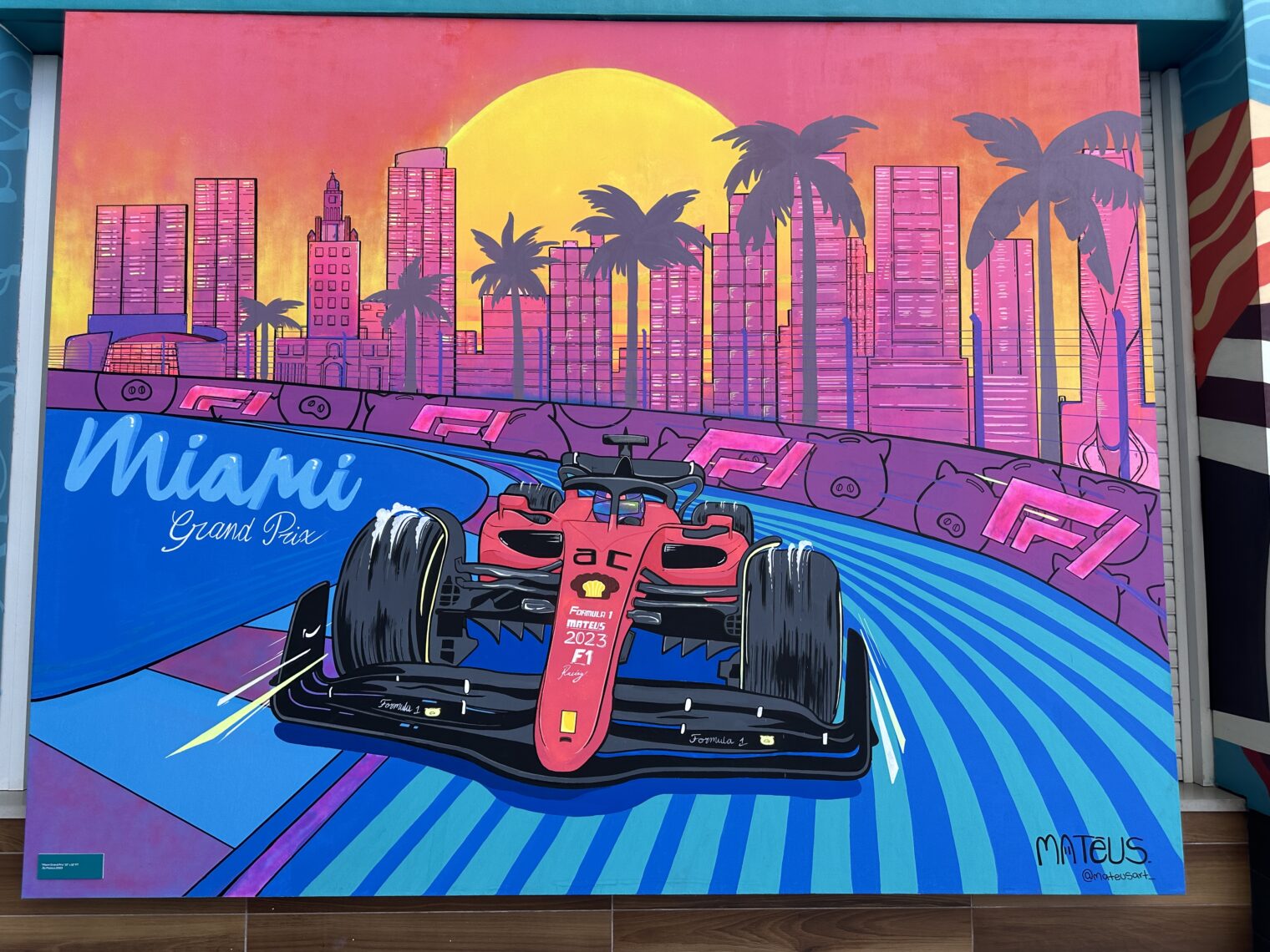
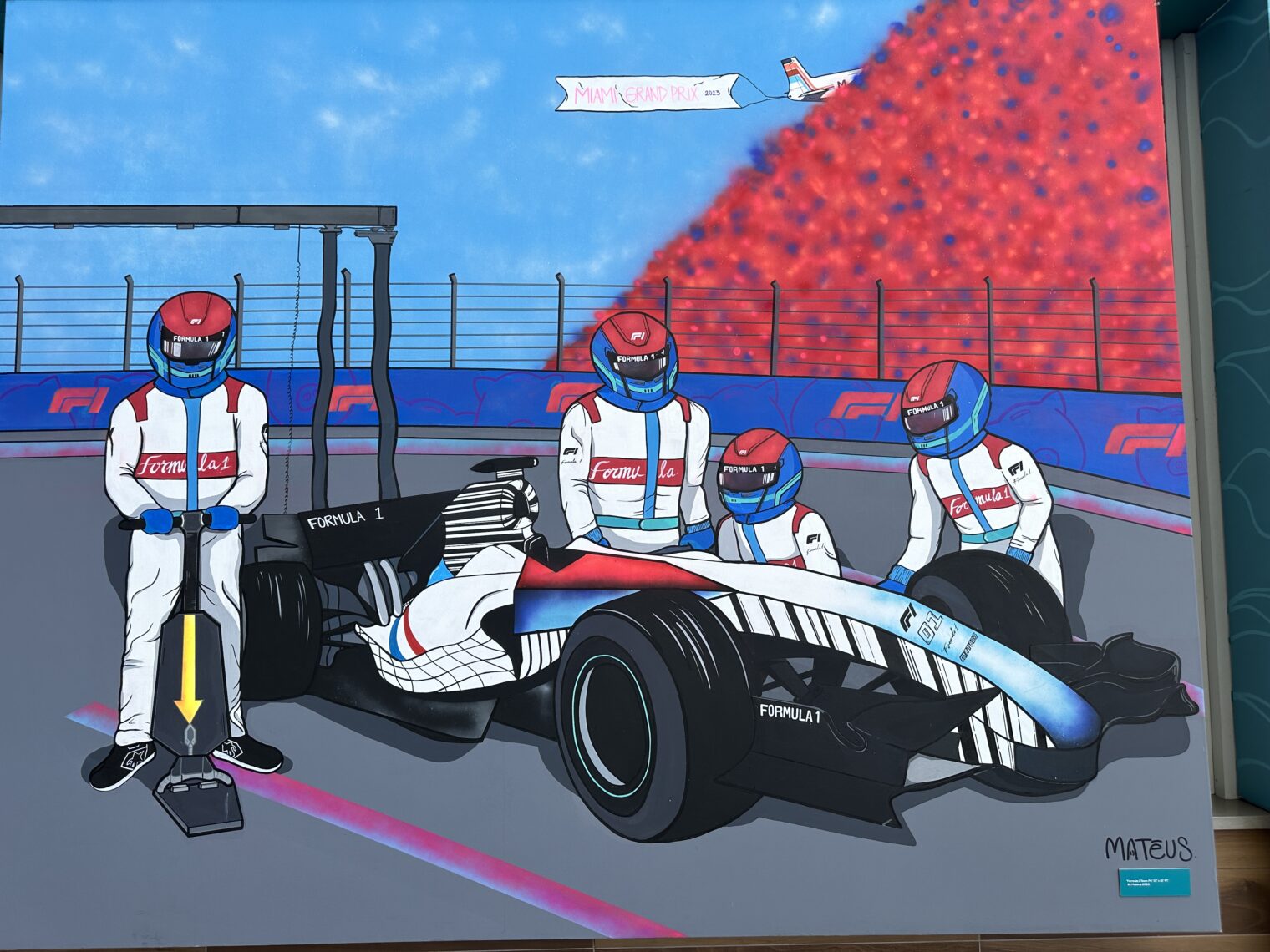
Some car dealers brought their wares. Here’s a Koenigsegg:
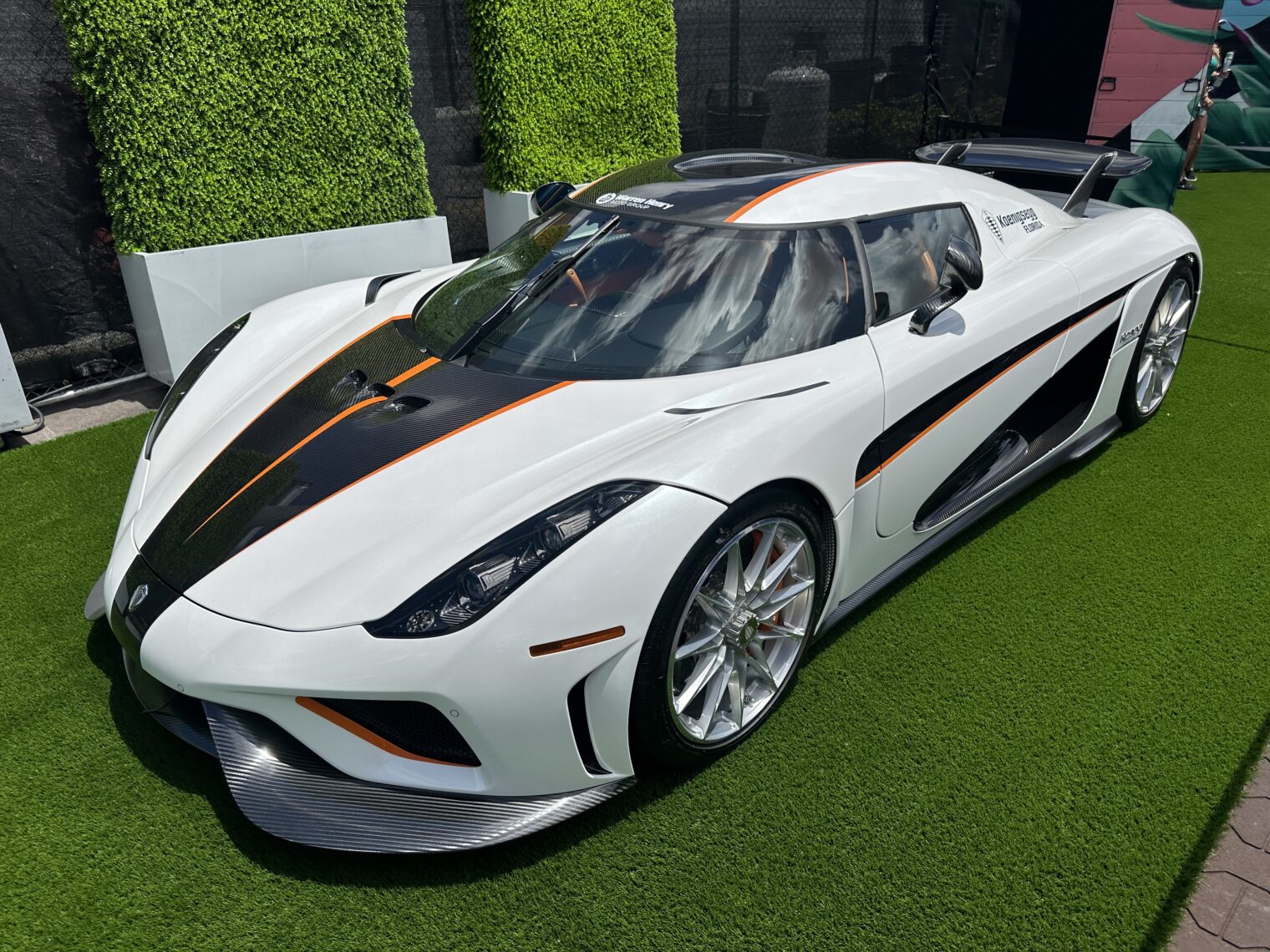
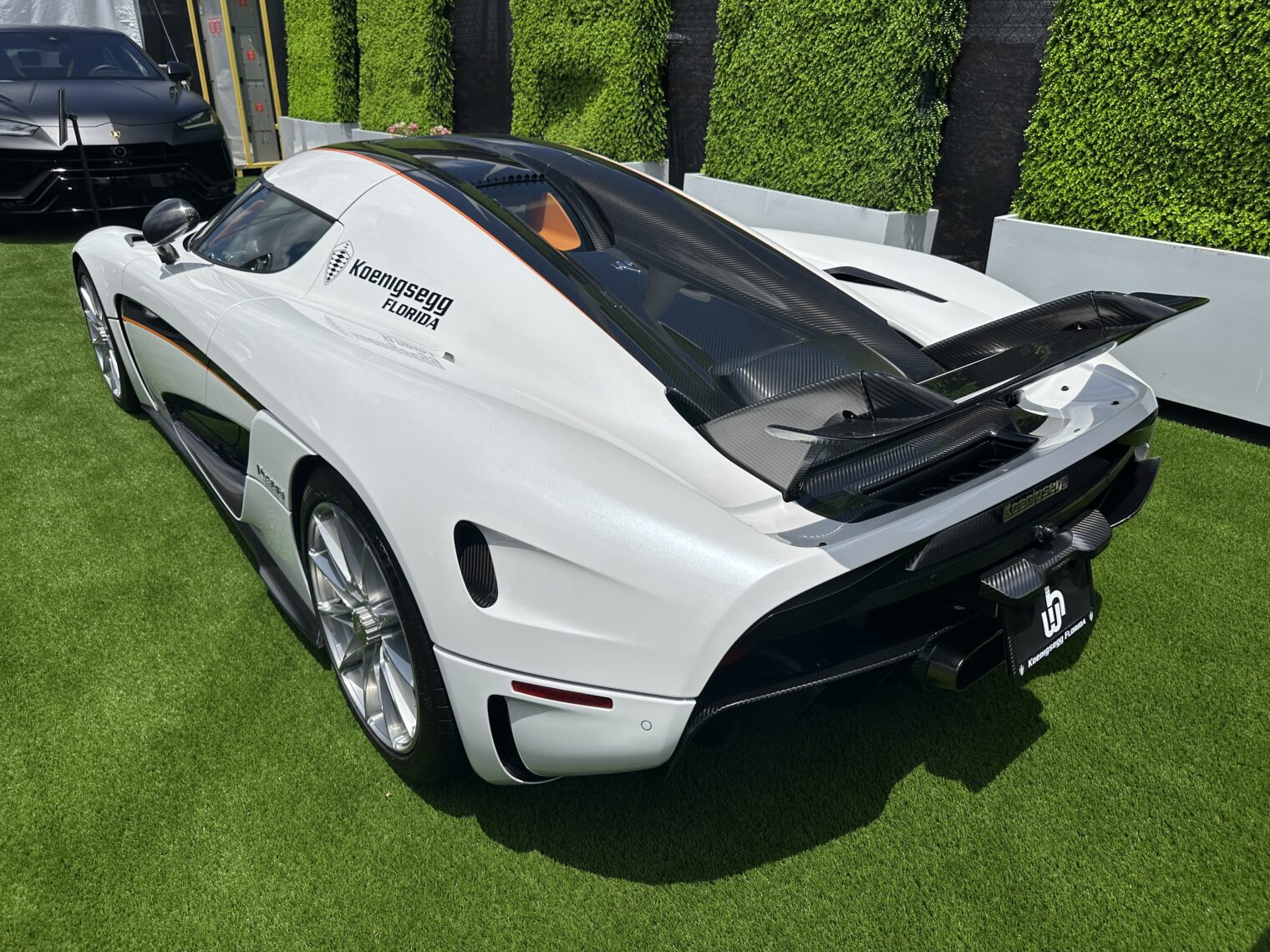
Some porn for Californians from the drive back… gasoline at $3.46/gallon right next to the Palm Beach International Airport:
It was a good day and wasn’t too brutal for either sun or noise, but I wouldn’t have wanted to go back the next day for the real race (better to watch on TV). Although the crowds were managed well, it was still a crowded environment from the moment you left your car to the moment you got back. One day wasn’t quite long enough to explore all of the fan areas, but it was still enough for one year. Maybe I would feel differently if they used a Honda Odyssey as a pace car.
The Apple Watch’s summary of the event:

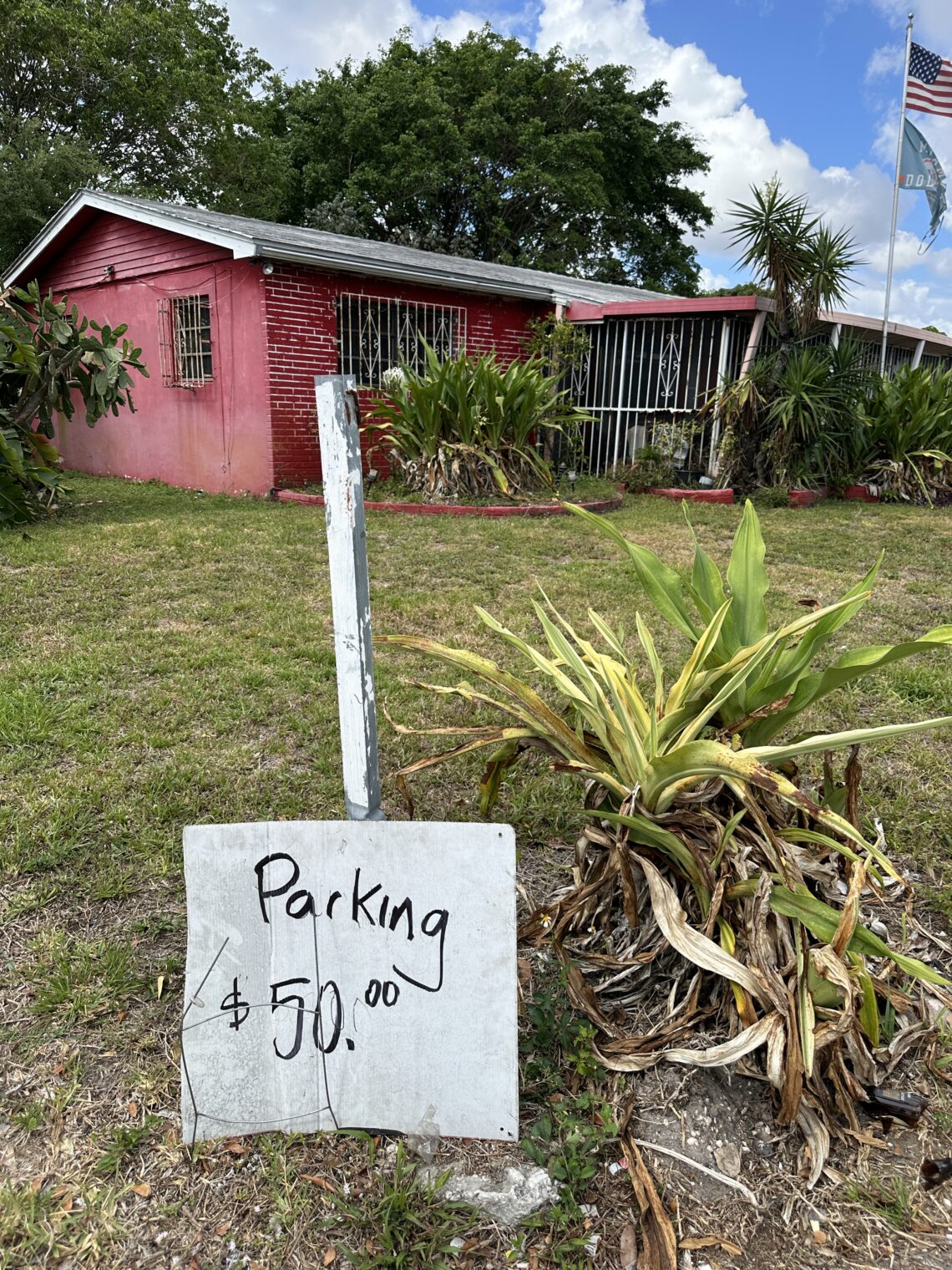
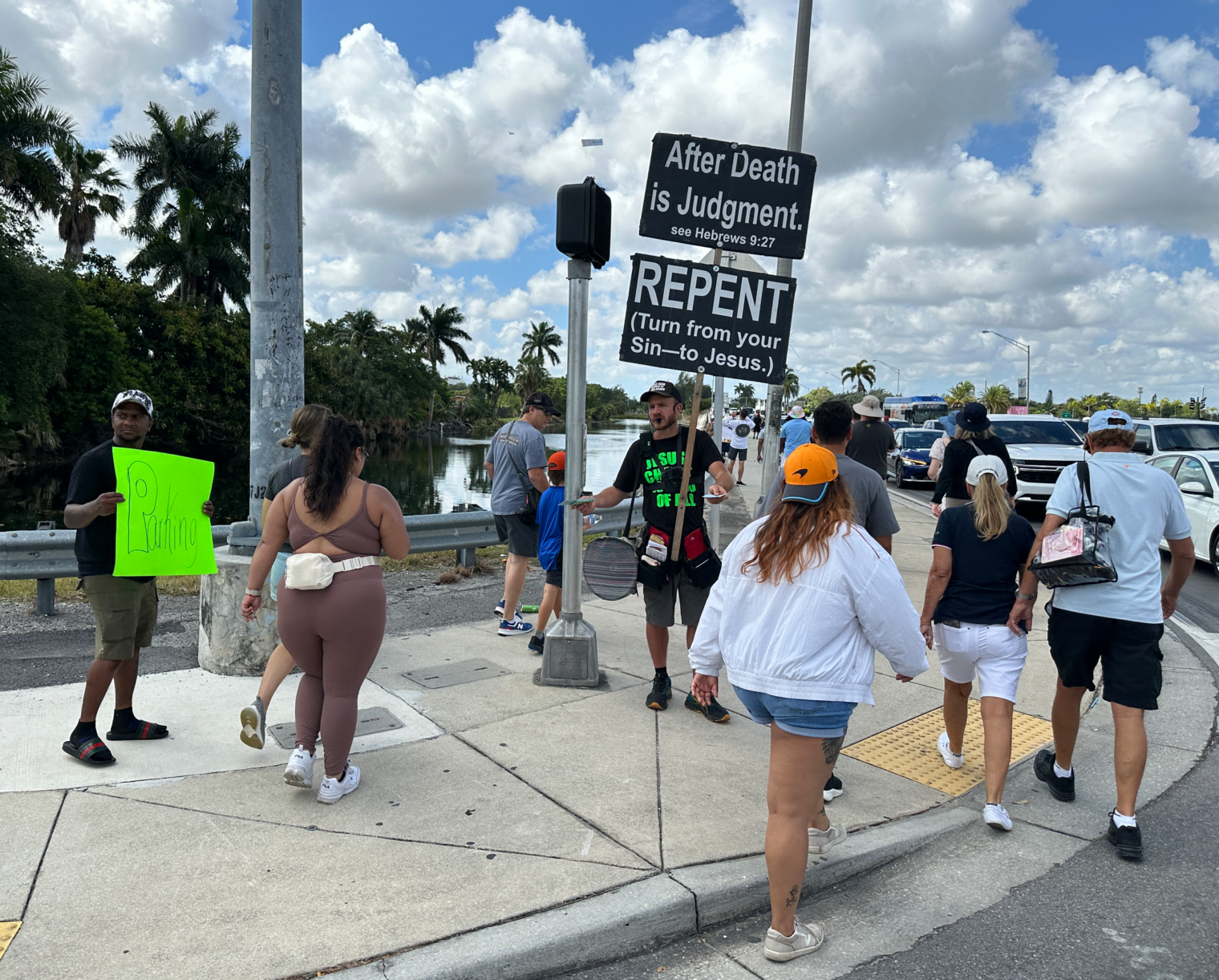
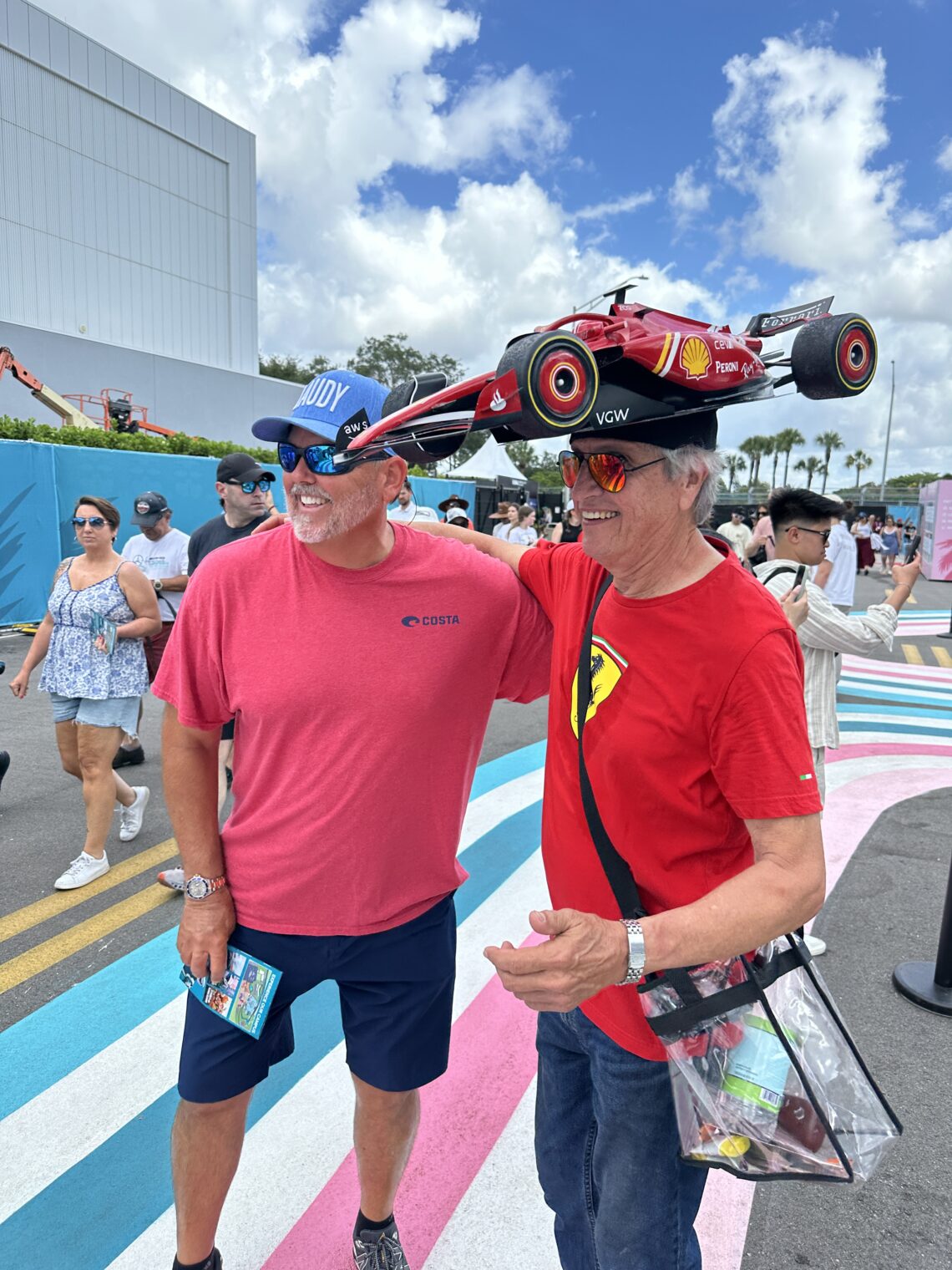
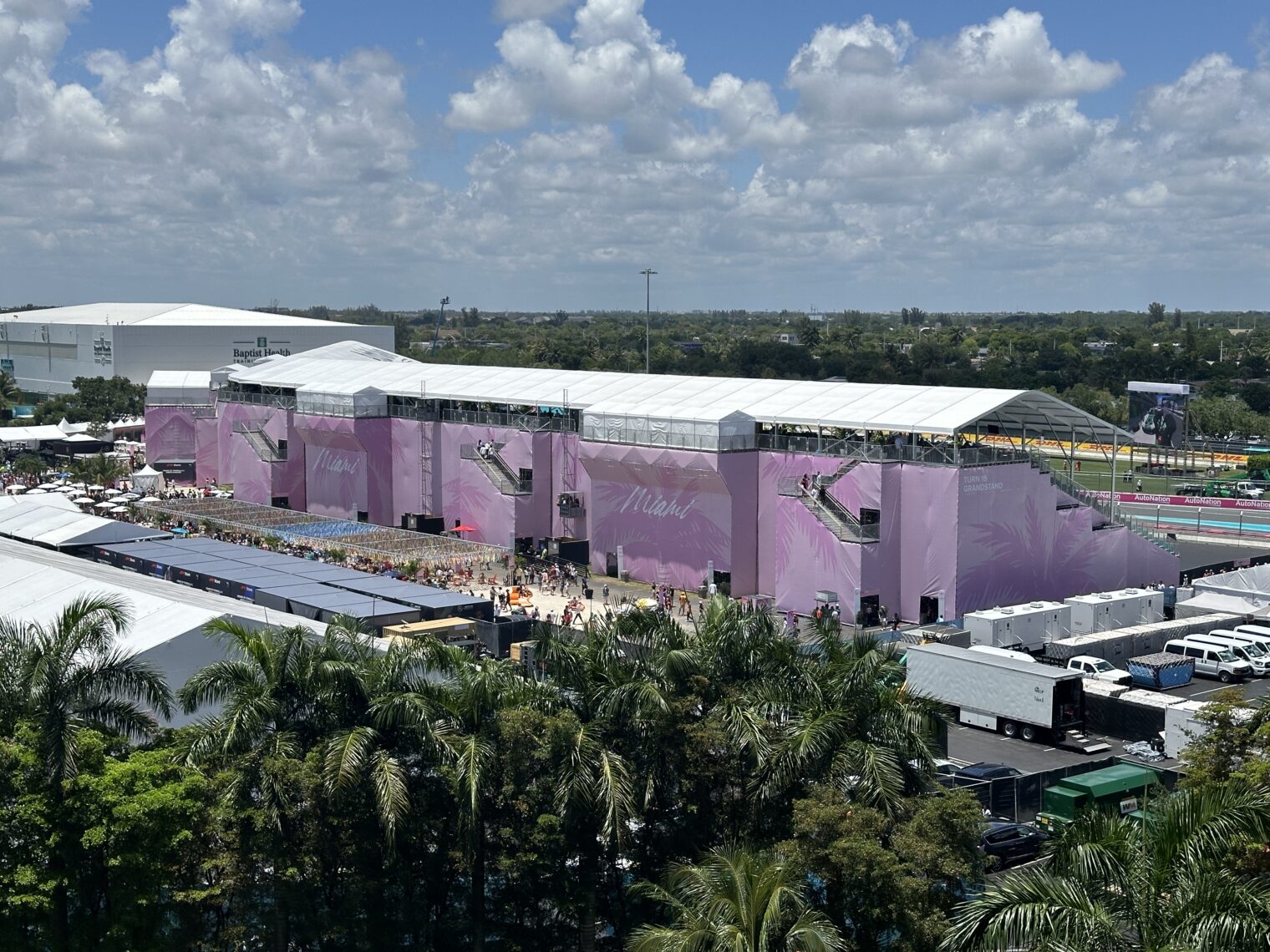

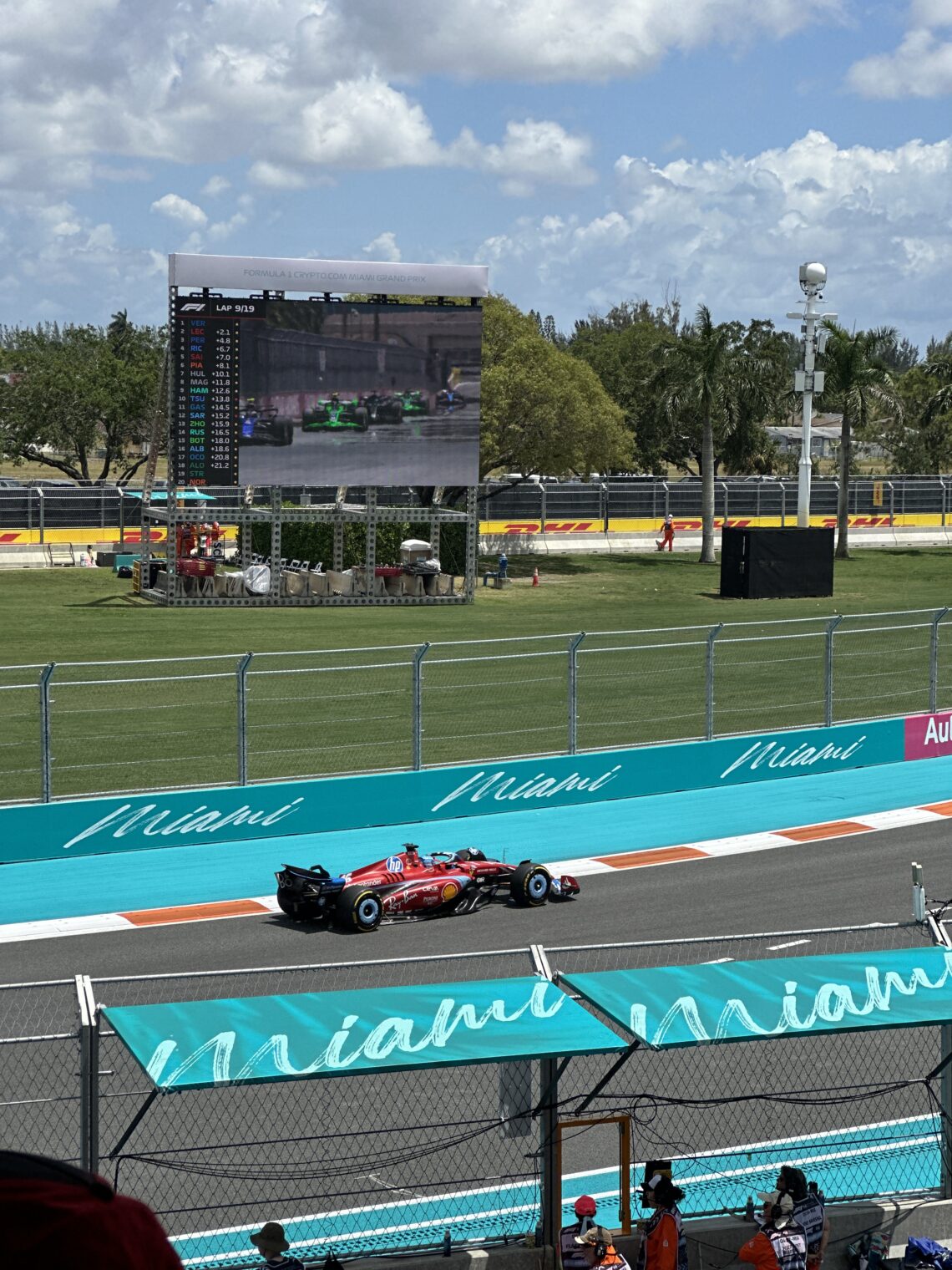
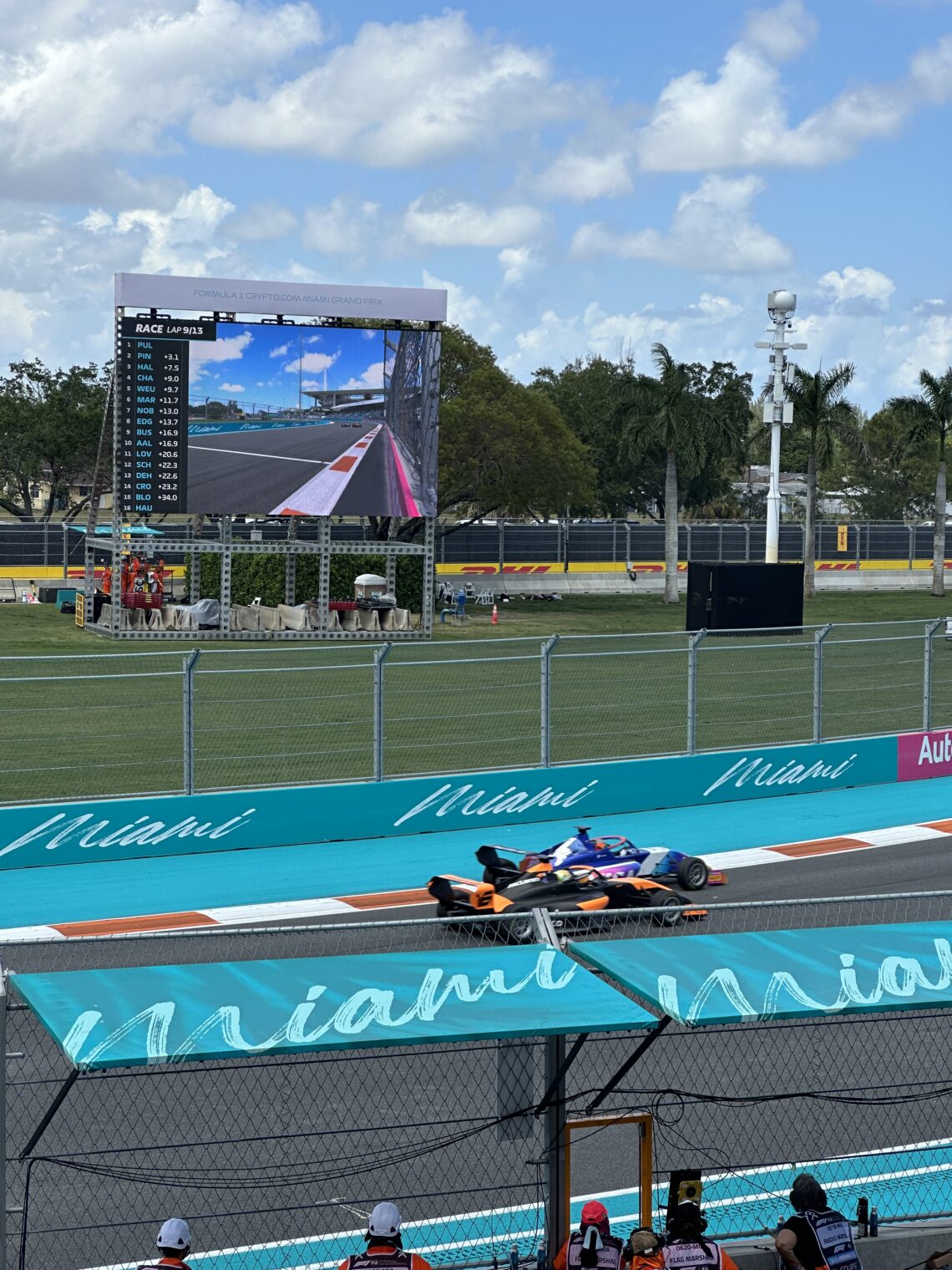

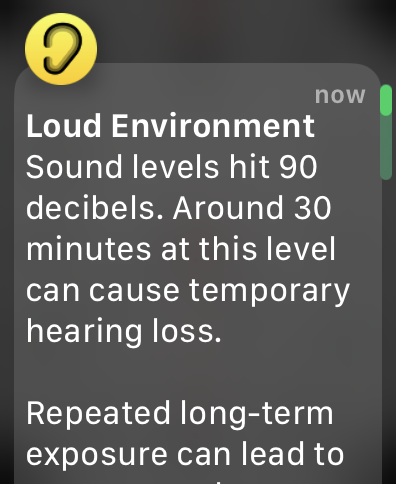
> I’m not sure why Ferrari wants to participate in Formula 1
Ferrari spent $570M on F1, and makes ~13,000 cars per year. So each Ferrari car has an average $44K baked into its price to support their F1 program.
Anon: Is that the loss for the F1 team or the spending? If it is the spending, can’t they make most of it back with revenue share from F1 itself (funded by ticket sales and TV rights) and then merchandise sales? I saw a lot of pudgy middle-aged guys wearing the jerseys of young fit Ferrari drivers! If even 3 percent of F1 fans spend $120 on a Ferrari shirt each year that is made by slaves in a third world nation, wouldn’t that be more than $570M per year? (Let’s assume 1 billion fans, which means 30 million buyers times $120 = $3.6 billion per year. I did a quick check with the Google and it seems that my estimate is off by a fact of 2. Ferrari has about $2 billion in merchandise sales per year. At least 30% of that has to be profit and I don’t think they’re get most of this unless they did something other than sell fancy cars to total douches.)
Anon: I forgot the sponsorship money! HP pays Ferrari to put the HP name on the cars and the drivers. Oracle pays a beverage company to put its name on the beverage company’s cars.
I suspect that the tech companies are mainly buying the corporate hospitality experience (great seats, access to restricted areas, meeting drivers/celebrities) for their senior people and anyone they want to impress. As you say, the name on the side of the car can’t be influencing many people.
“the modest neighborhood to the north of the stadium had families selling driveway parking for $35-50”
If deciding to park in this “modest” neighborhood, then be sure to retrieve your vehicle before dark.
You ask why not use drones? Red Bull recently built one specifically to tolerate the forces necessary to follow Formula One cars:
https://www.youtube.com/watch?v=9pEqyr_uT-k
(Didn’t see any rainbow flag or mask pictures. It must’ve been disappointing for you.)
Mike: Thanks for that video! Very impressive!
If I had seen anyone wearing a mask or observing Rainbow Flagism I certainly would have tried to get a photo, but I didn’t! The football team that is the main tenant of the stadium claims to follow the DEI religion: “The organization actively embraces the diversity and intersections that make up South Florida, uniting groups of different races, genders, sexual orientations, identities, abilities and faiths around the power of football.” https://media.hardrockstadium.com/community/ I don’t know if this can be considered sincere, however, because I didn’t see any sacred rainbow symbols in the stadium.
F1 claims to be all about diversity and inclusion as well, but the drivers do not strike me as diverse in terms of gender ID or age. https://scuderiafans.com/openly-gay-drivers-in-f1/ says that they desperately want to have drivers from the 2SLGBTQQIA+ community, but somehow they never do.
———— from the above
F1 continues to be open to drivers and fans from all walks of life, regardless of preferences. The extent to which this attitude permeates the sport can clearly be seen by the four-time world champion, German ace Sebastian Vettel, and his vocal support for the LGBT community. He may be a father of three, but he has also worn his beliefs on his sleeve, appearing in the rainbow colors before events, such as the Hungarian Grand Prix. With the distinctive LGBT pallette emblazoned across his chest, featuring the slogan, ‘Same Love,’ with matching helmet and racing boots, he made his position clear. F1 is no place for anyone harboring bigoted views. He has also written articles and spoken about F1 welcoming gay drivers alongside those identifying in any other way.
Big companies, paying Ferrari and the likes to have their company name painted on those cars is what my Big company did and for months now we have been spammed with emails about it: Ferrari wins, wins!
What about when one of those F1 cars crash and burns? Does that mean Big company also crashes and burns?
Off topic, but sad news to report: “M.I.T. Will No Longer Require Diversity Statements for Hiring Faculty …
Applicants were required to explain how they would enhance diversity.”
Archived link to avoid nytimes.com paywall: https://archive.md/YmZmJ
I think this would be a wonderful opportunity to pause for a moment and give thanks for the many great contributions of the black community and their culture to our society.
Their peaceful and generous nature makes them ideal neighbors, lending testimony to their exceptional family values and parenting skills unrivaled by any other culture.
Their commitment to academic excellence enriches our schools and serves as an example to all who hope to achieve prominence as a people.
Real estate values are fueled by the influx of African Americans into an area due to their caring and respectful nurturing of these communities, as an example of all they have achieved by their enthusiasm for self-improvement through hard work and a self-reliant can-do nature.
African American international reputation for self restraint, boundless patience and superior non-violent conflict resolution skills is legendary across the globe.
Without their industrious and creative drive, we would be poorer as a nation.
Is this real? $180 for nachos at the “Hard Rock Beach Club” at the Miami F1 GP:
https://twitter.com/itsonelouder/status/1787219939402924521
Anon: the $180 nachos probably are real, but also probably are in catering quantity. A complete meal for one person with non-alcoholic drink from any of the vendors that I saw would have been $25-40. I did a Google search just now and found https://www.usatoday.com/story/sports/motor/formula1/2024/05/07/f1-miami-vegasa-tickets-food-prices-affordability/73587375007/ which says that the picture is “actually a suite menu” and adds “Miami reduced the price of their general admission campus pass from $590 to $450 for the three-day race weekend this year. Some fans also took advantage of the 305-day promotion, ending on March 5, which offered the campus pass for $305 (Miami’s area code).”